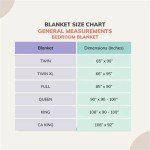Full Size Bed vs. Queen vs. King: A Comprehensive Comparison
Choosing the right bed size is a crucial decision for achieving optimal sleep quality and comfort. The available space, individual sleeping habits, and budget are all important factors to consider. The full size, queen size, and king size beds are three of the most common options, each offering distinct advantages and disadvantages. Understanding the differences in dimensions, suitability, and cost is essential for making an informed choice.
This article provides a detailed comparison of full size, queen size, and king size beds, focusing on key aspects such as dimensions, space requirements, comfort levels, cost, and room suitability. By examining these factors, individuals can better determine which bed size best aligns with their needs and preferences.
Dimensions and Space Requirements
The primary difference between full, queen, and king size beds lies in their dimensions. A full size bed, also known as a double bed, typically measures 54 inches wide and 75 inches long. This size is often considered adequate for single sleepers or smaller couples. However, for individuals who prefer more space or for couples who tend to move around during sleep, a larger bed may be more suitable.
A queen size bed measures 60 inches wide and 80 inches long. This represents a significant increase in width and length compared to a full size bed. The extra space provided by a queen size bed makes it a popular choice for couples and single sleepers who appreciate having more room to stretch out. The additional length is particularly beneficial for taller individuals who may find a full size bed too short.
King size beds are the largest standard bed size, typically measuring 76 inches wide and 80 inches long. This width provides ample space for couples to sleep comfortably without disturbing each other. The dimensions of a king size bed offer the most personal space per sleeper compared to full and queen size options. California king beds, measuring 72 inches wide and 84 inches long, are another variation of the king size bed. These are designed to provide additional length while slightly reducing the width, catering to taller individuals who may not need the extra width of a standard king.
Beyond the mattress dimensions, the overall space requirements of each bed size need to be considered. A full size bed requires a smaller room compared to queen and king size beds. This makes it a suitable option for smaller bedrooms or guest rooms where space is limited. Placement of furniture around the bed also needs to be taken into account to ensure ease of movement within the room.
Queen size beds require a moderately sized room. While they offer more sleeping space than full size beds, they also occupy a larger footprint. Careful consideration of the room's layout is necessary to ensure that the queen size bed fits comfortably without overcrowding the space. Sufficient space should be available around the bed for walking and accessing other furniture.
King size beds demand the largest amount of space. These beds are best suited for master bedrooms or larger rooms that can accommodate their significant size. Adequate space is essential to maintain a comfortable and functional bedroom environment. Overcrowding a small room with a king size bed can create a cramped and uncomfortable feeling.
Comfort and Sleep Quality
The choice of bed size directly impacts sleep quality and comfort. A bed that is too small can lead to restless sleep, discomfort, and potentially impact overall well-being. Adequate space allows for freedom of movement and prevents partners from disturbing each other during sleep.
Full size beds, while sufficient for single sleepers, may feel cramped for couples, particularly those who are larger in size or who move frequently during sleep. The limited space can lead to one partner disturbing the other, resulting in disrupted sleep patterns. For single sleepers who prefer ample room to stretch out, a full size bed might also prove insufficient.
Queen size beds offer a good balance of space and comfort for both single sleepers and couples. The additional width and length provide more room to move around and prevent feelings of confinement. Couples are less likely to disturb each other's sleep when sleeping on a queen size bed compared to a full size bed. Single sleepers can enjoy the luxury of extra space for stretching and relaxation.
King size beds offer the highest level of comfort and personal space. Couples sleeping on a king size bed often experience minimal disturbance from their partner's movements. The ample space allows each sleeper to maintain their preferred sleeping position without impacting the other. King size beds are particularly beneficial for couples who have different sleep schedules or preferences. Single sleepers can revel in the expansive space, creating a luxurious and comfortable sleep environment.
The choice of mattress and bedding also influence the overall comfort of the bed. Regardless of the bed size, selecting a high-quality mattress that provides adequate support and pressure relief is crucial. The appropriate type of mattress will differ depending on whether the bed will often be used by a single person or a couple. Similarly, choosing breathable and comfortable bedding contributes to a restful night's sleep.
Individual sleep preferences, such as sleeping position and temperature, should also be considered. For example, side sleepers may benefit from a softer mattress that conforms to their body contours, while back sleepers may prefer a firmer mattress that provides more support. Likewise, individuals who tend to overheat during sleep may opt for bedding made from breathable materials.
Cost Considerations
The cost of a bed is influenced by several factors, including size, materials, construction, and brand. Generally, larger bed sizes are more expensive than smaller sizes due to the increased amount of materials required and the complexity of manufacturing.
Full size beds are typically the most affordable option. The lower cost makes them an attractive choice for individuals on a budget or for those furnishing guest rooms where the bed will not be used as frequently. The price range for full size beds can vary depending on the specific mattress and frame chosen, but they generally represent the lowest initial investment.
Queen size beds are generally more expensive than full size beds but are often more affordable than king size beds. The mid-range cost of queen size beds makes them a popular choice for a wide range of consumers. The additional space and comfort they offer justify the higher price point for many individuals and couples. The price range can vary depending on the quality of the mattress and frame, as well as any additional features.
King size beds are the most expensive option. The larger size and increased amount of materials contribute to the higher price. King size beds are typically considered an investment in long-term comfort and sleep quality. While the initial cost may be higher, the benefits of enhanced space and comfort can outweigh the financial considerations for many couples. The price range can vary significantly depending on the brand, materials, construction, and any additional features such as adjustable bases or built-in storage.
Beyond the initial purchase price, other cost considerations include bedding and accessories. Larger bed sizes require larger sheets, blankets, and comforters, which may also be more expensive. The cost of a bed frame, headboard, and other accessories should also be factored into the overall budget. Shipping costs may be higher for larger bed sizes due to their increased weight and dimensions.
The long-term cost of owning a bed should also be considered. A high-quality mattress and frame can last for many years, providing a return on investment in the form of improved sleep quality and comfort. Choosing durable and well-constructed products can help to minimize the need for replacement or repairs in the future.
Ultimately, the best bed size for an individual or couple depends on a variety of factors. Analyzing the dimensions, space requirements, comfort levels, and cost considerations is crucial for making an informed decision that aligns with individual needs and preferences. Careful planning and research can help to ensure that the chosen bed size provides optimal sleep quality and comfort for years to come.
Mattress Size Chart And Bed Dimensions Guide 2024

What S The Best Mattress Size For Sleeping Restonic

Bed Sizes Guide Curtain Of Maine
King Vs Queen Bed Which Size Is Right For You Frwd By Cuura Space
.jpg?strip=all)
King Vs Queen Size Bed Know Which Suits You The Best

Queen Vs King Mattress 2025 Nerd

King Vs Queen Bed Size Mattress What Is The Difference Nectar Sleep

Mattress Size Guide Secrets For Every Room Eachnight

Mattress Sizes And Dimensions Guide Clarity

King Vs Queen Bed Which Size Fits Your Indian Bedroom








